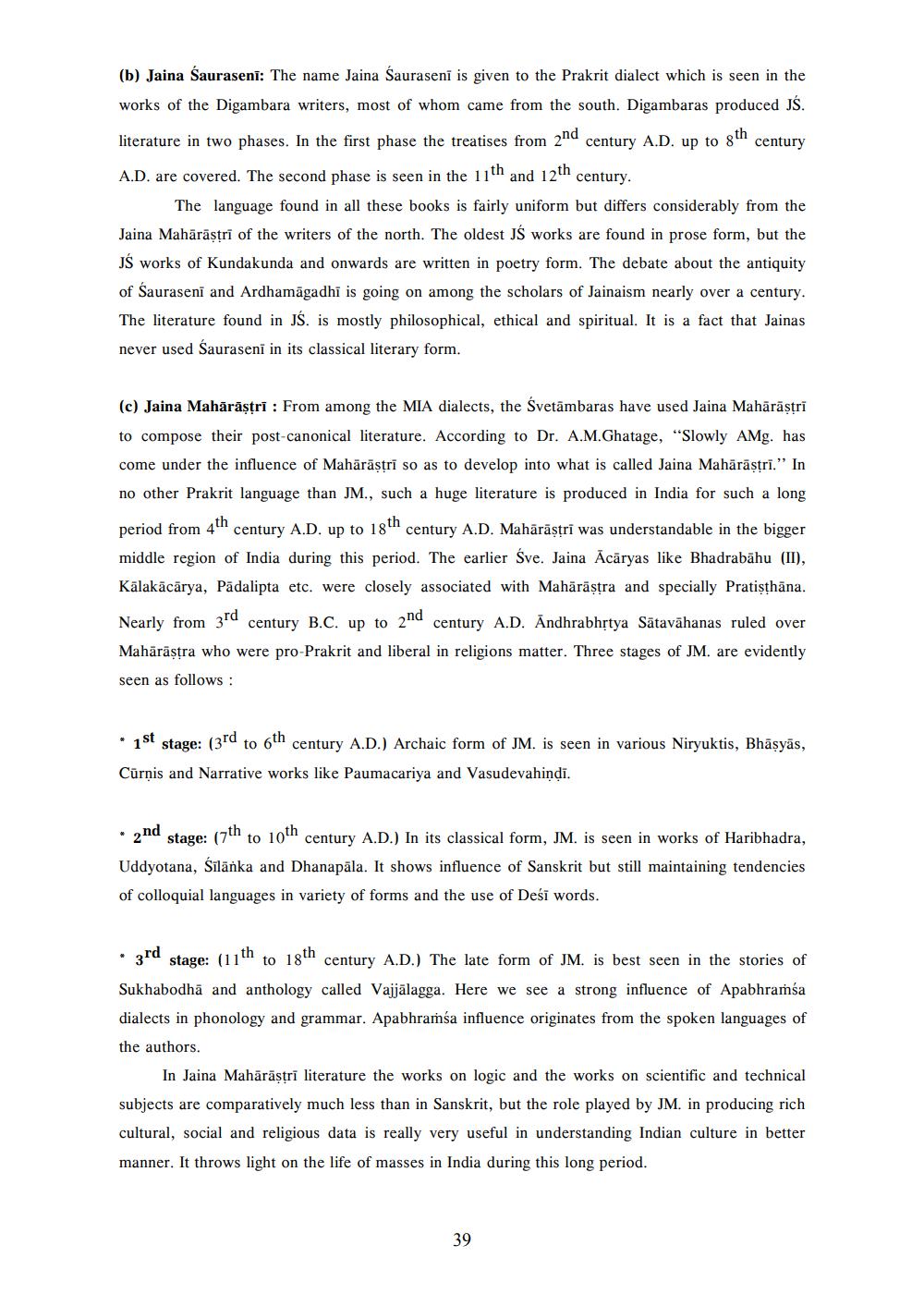________________
(b) Jaina Sauraseni: The name Jaina Sauraseni is given to the Prakrit dialect which is seen in the works of the Digambara writers, most of whom came from the south. Digambaras produced JŚ. literature in two phases. In the first phase the treatises from 2nd century A.D. up to 8th century A.D. are covered. The second phase is seen in the 11th and 12th century.
The language found in all these books is fairly uniform but differs considerably from the Jaina Mahārāstrī of the writers of the north. The oldest JS works are found in prose form, but the JŚ works of Kundakunda and onwards are written in poetry form. The debate about the antiquity of Sauraseni and Ardhamāgadhi is going on among the scholars of Jainaism nearly over a century. The literature found in JŚ. is mostly philosophical, ethical and spiritual. It is a fact that Jainas never used Sauraseni in its classical literary form.
(e) Jaina Mahārāştri : From among the MIA dialects, the Svetāmbaras have used Jaina Mahārāstri to compose their post-canonical literature. According to Dr. A.M.Ghatage, “Slowly AMg. has come under the influence of Mahārāstrī so as to develop into what is called Jaina Mahārāstrī." In no other Prakrit language than JM., such a huge literature is produced in India for such a long
period from 4th century A.D. up to 18th century A.D. Mahārāstrī was understandable in the bigger middle region of India during this period. The earlier Sve. Jaina Ācāryas like Bhadrabāhu (II), Kālakācārya, Pādalipta etc. were closely associated with Mahārāstra and specially Pratisthāna. Nearly from 3rd century B.C. up to 2nd century A.D. Andhrabhrtya Sātavāhanas ruled over Mahārāstra who were pro-Prakrit and liberal in religions matter. Three stages of JM. are evidently seen as follows:
• 1st stage: (3rd to 6th century A.D.) Archaic form of JM. is seen in various Niryuktis, Bhāsyās, Cūrņis and Narrative works like Paumacariya and Vasudevahindi.
2nd stage: (7th to 10th century A.D.) In its classical form, JM, is seen in works of Haribhadra, Uddyotana, Silānka and Dhanapāla. It shows influence of Sanskrit but still maintaining tendencies of colloquial languages in variety of forms and the use of Deśī words.
3rd stage: (11th to 18th century A.D.) The late form of JM. is best seen in the stories of Sukhabodhā and anthology called Vajjālagga. Here we see a strong influence of Apabhramsa dialects in phonology and grammar. Apabhramsa influence originates from the spoken languages of the authors.
In Jaina Mahārāştri literature the works on logic and the works on scientific and technical subjects are comparatively much less than in Sanskrit, but the role played by JM. in producing rich cultural, social and religious data is really very useful in understanding Indian culture in better manner. It throws light on the life of masses in India during this long period.
39




